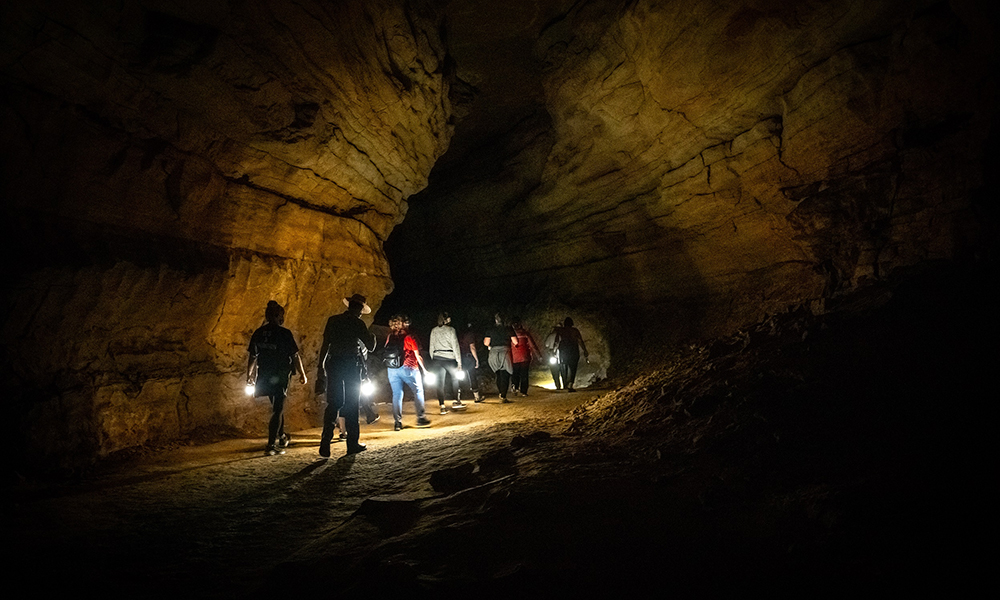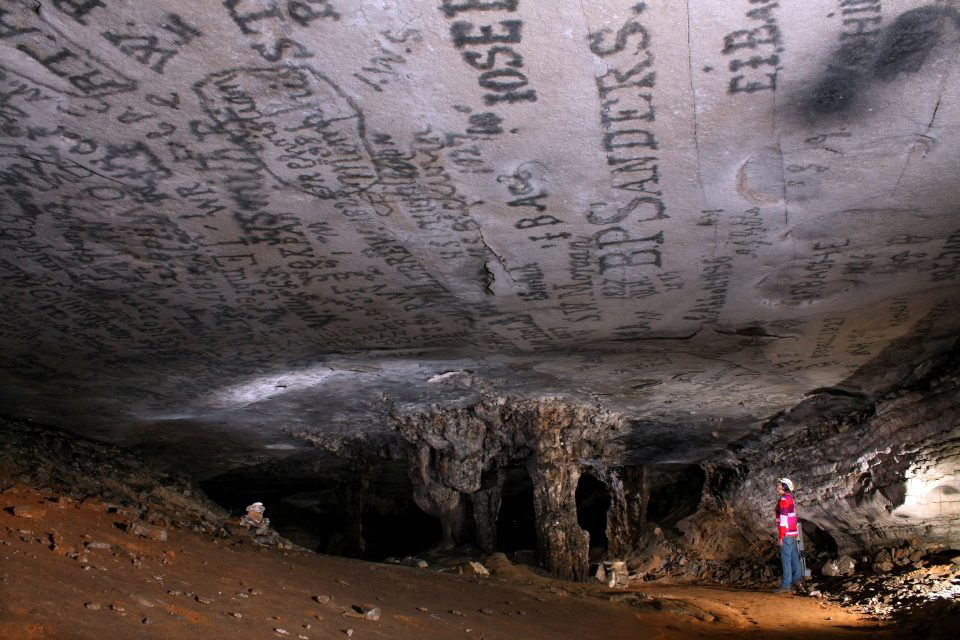
位于肯塔基州中南部的猛犸洞国家公园已经拥有一项超级殊荣:它是世界上最长的洞穴系统,已探明的洞穴通道长达400多英里(约合643.7千米)。最近,在体育博彩平台JeffBet评选的美国最令人失望的旅游景点排行榜上,它名列第三,有望获得另一项殊荣。
一位沮丧的游客在Yelp上说:“我以为这里会像《指环王》里的场景一样,但实际上只有一些石头。”
但这种不温不火的评论和名列令人失望的旅游景点名单带来的负面评价,却成为了猛犸洞公园今年最大的成功实践之一。该公园的社交媒体账号为该景点撰写了一篇宣传文章,重点宣传了JeffBet排名所带来的差评。8月份该公园在脸书(Facebook)的帖子中写道:“猛犸洞,这个充满遗憾的世界等着你的到来!”
在短短几周内,这篇帖子的点击量就超过了10万。据猛犸洞的管理分析师莫莉·施罗德(Molly Schroer)说,在肯塔基州博览会上,游客们纷纷向当地旅游团体引述该帖子,并希望谈论猛犸洞相关信息。
她告诉《财富》杂志:“我们在社交媒体上的粉丝增加了。人们决定关注我们来观看相关内容。我们认为这是一种宣传公园的方式,而且这对我们来说更多的是个意外之喜,因为很多人甚至不知道我们的存在。”
无论如何,人们或许应该对JeffBet的排名有所保留。肯尼迪航天中心(Kennedy Space Center)在令人失望的目的地中名列榜首,克利夫兰的摇滚乐名人堂博物馆(Rock and Roll Hall of Fame)屈居亚军。尽管有一位猛犸洞的游客希望获得托尔金(《指环王》作者)式的体验,但该公园在Yelp上的平均评分为4.4星,有400多条评论。

对肯塔基州的旅游业来说,人们对猛犸洞的兴趣是个好消息。2023年是肯塔基州旅游业最辉煌的一年,为该州创造了近140亿美元的收入,吸引了7900多万游客。但对于一些国家公园来说,疫情期间游客数量激增有利有弊,因为游客会在保护区乱扔垃圾或随地大小便。
施罗德坚称,猛犸洞在网上走红的15分钟对公园来说是一笔意外之财。要量化这篇帖子的影响还为时过早,她将在未来几个月密切关注公园的在线预订情况,以追踪任何重大变化。
逃离旅游陷阱
猛犸洞的非传统营销是旅游业在刚刚恢复到疫情前水平的情况下,如何利用负面评价成为备受追捧的策略的最新例证。
类似的活动在过去也取得过成功。五年来,内布拉斯加州的标语一直是“说实话,我们不适合所有人”。内布拉斯加州旅游委员会主任约翰·里克斯(John Ricks)告诉州议员,虽然该州在今年2月废除了这一标语,但它还是起到了作用。最新调查显示,游客的兴趣从2019年的19%上升到39%。这一自贬的标语承认该州因平淡乏味而享有负面声誉,吸引了原本不感兴趣的游客的目光。
据《内布拉斯加州观察报》(Nebraska Examiner)报道,里克斯说:“说实话,我们唯一能引起他们注意的方法就是同意他们的观点,然后加以反驳。”
今年夏初,旅游公司“奥斯陆旅游局”(Visit Oslo)发起了一项名为“奥斯陆到底是个城市吗?”的活动,也取得了类似的成功。在这段两分钟的视频中,一个孤独的当地人参观了挪威城市的部分地区,感叹奥斯陆的步行半径比巴黎或纽约小,并批评爱德华·蒙克(Edward Munch)的画作《呐喊》(The Scream)“并不完全是《蒙娜丽莎》”。这段视频在油管(Youtube)上疯传,两个月内点击量超过77万次。
注:爱德华·蒙克(Edvard Munch,1863年12月12日—1944年1月23日),挪威表现主义画家、版画复制匠,现代表现主义绘画的先驱,其绘画带有强烈的主观性和悲伤压抑的情调。他对心理苦闷的强烈的,呼唤式的处理手法对20世纪初德国表现主义的成长起了主要的影响,其主要作品有《呐喊》《生命之舞》《卡尔约翰街的夜晚》。

奥斯陆旅游局广告宣传的剧照展示了一个原本不感兴趣的北欧人分享他对这座城市的不甚热情的看法。
奥斯陆旅游局市场总监安妮-西格涅·法格伦(Anne-Signe Fagereng)告诉《财富》杂志:“如果你回想二三十年前,奥斯陆可能确实是一个有点乏味的旅游目的地。在过去的几十年里,奥斯陆发生了巨大的转变,但我们还没有足够的可信度,所以必须尝试更多的创意角度,让人们意识到奥斯陆所能提供的一切。”
法格伦在社交媒体上看到了人们发布的奥斯陆旅游帖子,帖子里经常有视频链接。旅游业趋势数据库ForwardKeys发现,广告发布后,人们前往奥斯陆旅游的意向大幅增加,在广告发布后的两个月内,关键词搜索量增加了近150万次。
事实证明,“所有报道都是好报道”这句格言不无道理。哈佛商学院(Harvard Business School)2016年的一项研究发现,在对华盛顿地区餐馆的评论中,Yelp上的一星评论与高达9%的收入增长相关。
宾夕法尼亚大学沃顿商学院(University of Pennsylvania’s Wharton School)市场营销学教授乔纳·伯杰(Jonah Berger)发现,好评固然会带来好的销售额,但只要产品的目标受众还不熟悉该产品,差评也会带来同样的效果。
对于小品牌或小网站来说,差评可以帮助它们崭露头角。在经历了最初的负面新闻风暴后,它们最终可以克服这些负面新闻,并最终留在公众的视线中。
2012年,伯杰在《哈佛商业评论》(Harvard Business Review)上写道:“对于那些口碑不佳的不知名产品的供应商来说,这是个好消息。这表明,在口碑不佳的记忆消失后,产品的知名度往往会持续存在。”
这也就解释了为什么猛犸洞这个鲜为人知的国家公园之一,能够让一篇帖子获得10万个赞,而其他大多数国家公园的帖子只有几百个赞。施罗德坚称,这篇帖子与其说是营销活动,不如说是一个内部玩笑。
她说:“这其实只是我们与忠实粉丝之间的一个玩笑,也是我们的主要目的。”(财富中文网)
译者:中慧言-王芳
位于肯塔基州中南部的猛犸洞国家公园已经拥有一项超级殊荣:它是世界上最长的洞穴系统,已探明的洞穴通道长达400多英里(约合643.7千米)。最近,在体育博彩平台JeffBet评选的美国最令人失望的旅游景点排行榜上,它名列第三,有望获得另一项殊荣。
一位沮丧的游客在Yelp上说:“我以为这里会像《指环王》里的场景一样,但实际上只有一些石头。”
但这种不温不火的评论和名列令人失望的旅游景点名单带来的负面评价,却成为了猛犸洞公园今年最大的成功实践之一。该公园的社交媒体账号为该景点撰写了一篇宣传文章,重点宣传了JeffBet排名所带来的差评。8月份该公园在脸书(Facebook)的帖子中写道:“猛犸洞,这个充满遗憾的世界等着你的到来!”
在短短几周内,这篇帖子的点击量就超过了10万。据猛犸洞的管理分析师莫莉·施罗德(Molly Schroer)说,在肯塔基州博览会上,游客们纷纷向当地旅游团体引述该帖子,并希望谈论猛犸洞相关信息。
她告诉《财富》杂志:“我们在社交媒体上的粉丝增加了。人们决定关注我们来观看相关内容。我们认为这是一种宣传公园的方式,而且这对我们来说更多的是个意外之喜,因为很多人甚至不知道我们的存在。”
无论如何,人们或许应该对JeffBet的排名有所保留。肯尼迪航天中心(Kennedy Space Center)在令人失望的目的地中名列榜首,克利夫兰的摇滚乐名人堂博物馆(Rock and Roll Hall of Fame)屈居亚军。尽管有一位猛犸洞的游客希望获得托尔金(《指环王》作者)式的体验,但该公园在Yelp上的平均评分为4.4星,有400多条评论。
对肯塔基州的旅游业来说,人们对猛犸洞的兴趣是个好消息。2023年是肯塔基州旅游业最辉煌的一年,为该州创造了近140亿美元的收入,吸引了7900多万游客。但对于一些国家公园来说,疫情期间游客数量激增有利有弊,因为游客会在保护区乱扔垃圾或随地大小便。
施罗德坚称,猛犸洞在网上走红的15分钟对公园来说是一笔意外之财。要量化这篇帖子的影响还为时过早,她将在未来几个月密切关注公园的在线预订情况,以追踪任何重大变化。
逃离旅游陷阱
猛犸洞的非传统营销是旅游业在刚刚恢复到疫情前水平的情况下,如何利用负面评价成为备受追捧的策略的最新例证。
类似的活动在过去也取得过成功。五年来,内布拉斯加州的标语一直是“说实话,我们不适合所有人”。内布拉斯加州旅游委员会主任约翰·里克斯(John Ricks)告诉州议员,虽然该州在今年2月废除了这一标语,但它还是起到了作用。最新调查显示,游客的兴趣从2019年的19%上升到39%。这一自贬的标语承认该州因平淡乏味而享有负面声誉,吸引了原本不感兴趣的游客的目光。
据《内布拉斯加州观察报》(Nebraska Examiner)报道,里克斯说:“说实话,我们唯一能引起他们注意的方法就是同意他们的观点,然后加以反驳。”
今年夏初,旅游公司“奥斯陆旅游局”(Visit Oslo)发起了一项名为“奥斯陆到底是个城市吗?”的活动,也取得了类似的成功。在这段两分钟的视频中,一个孤独的当地人参观了挪威城市的部分地区,感叹奥斯陆的步行半径比巴黎或纽约小,并批评爱德华·蒙克(Edward Munch)的画作《呐喊》(The Scream)“并不完全是《蒙娜丽莎》”。这段视频在油管(Youtube)上疯传,两个月内点击量超过77万次。
注:爱德华·蒙克(Edvard Munch,1863年12月12日—1944年1月23日),挪威表现主义画家、版画复制匠,现代表现主义绘画的先驱,其绘画带有强烈的主观性和悲伤压抑的情调。他对心理苦闷的强烈的,呼唤式的处理手法对20世纪初德国表现主义的成长起了主要的影响,其主要作品有《呐喊》《生命之舞》《卡尔约翰街的夜晚》。
奥斯陆旅游局广告宣传的剧照展示了一个原本不感兴趣的北欧人分享他对这座城市的不甚热情的看法。
奥斯陆旅游局市场总监安妮-西格涅·法格伦(Anne-Signe Fagereng)告诉《财富》杂志:“如果你回想二三十年前,奥斯陆可能确实是一个有点乏味的旅游目的地。在过去的几十年里,奥斯陆发生了巨大的转变,但我们还没有足够的可信度,所以必须尝试更多的创意角度,让人们意识到奥斯陆所能提供的一切。”
法格伦在社交媒体上看到了人们发布的奥斯陆旅游帖子,帖子里经常有视频链接。旅游业趋势数据库ForwardKeys发现,广告发布后,人们前往奥斯陆旅游的意向大幅增加,在广告发布后的两个月内,关键词搜索量增加了近150万次。
事实证明,“所有报道都是好报道”这句格言不无道理。哈佛商学院(Harvard Business School)2016年的一项研究发现,在对华盛顿地区餐馆的评论中,Yelp上的一星评论与高达9%的收入增长相关。
宾夕法尼亚大学沃顿商学院(University of Pennsylvania’s Wharton School)市场营销学教授乔纳·伯杰(Jonah Berger)发现,好评固然会带来好的销售额,但只要产品的目标受众还不熟悉该产品,差评也会带来同样的效果。
对于小品牌或小网站来说,差评可以帮助它们崭露头角。在经历了最初的负面新闻风暴后,它们最终可以克服这些负面新闻,并最终留在公众的视线中。
2012年,伯杰在《哈佛商业评论》(Harvard Business Review)上写道:“对于那些口碑不佳的不知名产品的供应商来说,这是个好消息。这表明,在口碑不佳的记忆消失后,产品的知名度往往会持续存在。”
这也就解释了为什么猛犸洞这个鲜为人知的国家公园之一,能够让一篇帖子获得10万个赞,而其他大多数国家公园的帖子只有几百个赞。施罗德坚称,这篇帖子与其说是营销活动,不如说是一个内部玩笑。
她说:“这其实只是我们与忠实粉丝之间的一个玩笑,也是我们的主要目的。”(财富中文网)
译者:中慧言-王芳
Mammoth Cave National Park in south-central Kentucky already holds one superlative: It’s the world’s longest cave system with over 400 miles of explored passageways. It’s on its way to holding another, recently ranking third on a list of most disappointing tourist attractions in the U.S. by sports betting platform JeffBet.
“I thought it would be like lord of the rings,” one deflated visitor said on Yelp. “But it was just some rocks.”
But the lukewarm reviews and scathing presence on a list of disappointing attractions turned into one of Mammoth Cave’s biggest successes of the year. The national park’s social media account wrote a promotion for the site spotlighting the bad reviews drudged up by JeffBet’s ranking. “A world of regret awaits you at Mammoth Cave!” an August Facebook post said.
In just a matter of weeks, the post received over 100,000 impressions. At the Kentucky State Fair, visitors approached local tourism groups quoting the post and wanted to talk about Mammoth Cave, according to Molly Schroer, management analyst at Mammoth Cave.
“Our followers on social media increased. People decided to follow us to watch our content,” she told Fortune. “We see that as a way to promote the park a lot more as a happy accident for us because a lot of [people], they didn’t even know we existed.”
JeffBet’s rankings should perhaps be taken with a grain of salt, anyway. The Kennedy Space Center topped the list of disappointing destinations, and Cleveland’s Rock and Roll Hall of Fame was the runner-up. And despite the one Mammoth Cave visitor who had hoped for a Tolkien-esque experience, the park otherwise has a 4.4-star Yelp average with over 400 reviews.
The influx of interest in Mammoth Cave is good news for the tourism industry in Kentucky, which had its biggest year in 2023, generating nearly $14 billion for the state and bringing in over 79 million visitors. But for some national parks, a Covid-era explosion in visitation has done as much harm as good, as tourists toss litter or defecate on protected areas.
Schroer insists Mammoth Cave’s 15 minutes of internet fame has been a windfall for the park. Too soon to quantify the impact of the post, she will keep an eye on the park’s online reservations in the coming months to track any sizable changes.
Escaping the tourist trap
Mammoth Cave’s unconventional marketing is the latest example of how utilizing bad reviews has become a sought-after strategy for the tourism industry, which has only recently returned to pre-pandemic levels.
Similar campaigns have had success in the past. For five years, Nebraska’s state tagline was, “Nebraska, honestly it’s not for everyone.” Though it retired the epigram in February, John Ricks, director of the Nebraska Tourism Commission, told state lawmakers the slogan worked. Interest among tourists increased from 19% in 2019 to 39% in the latest survey. The self-abasing slogan owned the negative reputation that state had for being flat and boring, which caught the eyes of disinterested tourists.
“The only way we could get their attention, honestly, was by agreeing with them, and then counteracting it,” Ricks said, according to the Nebraska Examiner.
Tourism company Visit Oslo had similar success earlier this summer with its campaign “Is it even a city?” The two-minute video shows a forlorn local visiting parts of the Norwegian city, lamenting the walkability of Oslo’s smaller radius compared to Paris or New York, and critiquing Edward Munch’s The Scream painting as “not exactly the Mona Lisa.” The video went viral, with over 770,000 Youtube views in about two months.
“If you look like 20 or 30 years back, it was really maybe a little bit of a dull destination,” Visit Oslo director of marketing Anne-Signe Fagereng told Fortune. “Then there’s been this huge kind of transformation in Oslo over the last decades, but we didn’t quite have the credibility, so we had to try more of a creative angle to make people realize everything that Oslo had to offer.”
Fagerang has seen social media posts of people’s trips to Oslo, often with the video linked in the post. Travel industry trends database ForwardKeys found a sizable increase in intent to visit Oslo after the release of the ad, with keyword searches increasing by almost 1.5 million in the two months following the campaign launch.
As it turns out, there is some credence to the adage “all press is good press.” A 2016 Harvard Business School study found that among reviews of Washington-area restaurants, a one-star Yelp review was associated with an up to 9% increase in revenue.
Jonah Berger, a professor of marketing at the University of Pennsylvania’s Wharton School, found that while good reviews certainly result in good sales, poor reviews can do the same, so long as a product’s intended audience is not already familiar with the product.
For small-name brands or sites, bad reviews can help put them on the map. As they weather the storm of initial bad press, they eventually can overcome it and ultimately remain in the public eye.
“For purveyors of obscure products that get poor assessments, this is good news, suggesting that product awareness often lingers after the memory of the bad evaluation fades,” Berger wrote in Harvard Business Review in 2012.
That could explain why Mammoth Cave, one of the lesser-known national parks, was able to rack up 100,000 likes on a post, when most of its others garner a couple hundred. Schroer insisted the post was less of a marketing campaign and more of an inside joke.
“This really was just us having a lot of fun with our regular followers,” she said. “That was our main goal.”






